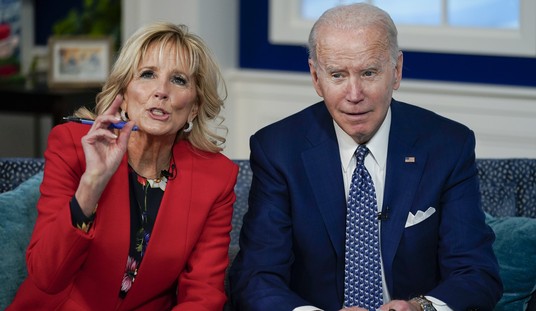How accurate are the polls? Is there one gold standard out there? Are they all biased and skewed tools of partisan media?
For my money, the most reliable polling data is the Real Clear Politics polling average.
In 2008, the final Real Clear Politics polling average predicted Barack Obama to defeat John McCain by 7.6 points. Obama won by 7.3 points. In 2004, the final Real Clear Politics polling average predicted George W. Bush to defeat John Kerry by 1.5 points. Bush won the election by 1.5 points.
That’s called nailing it.
Worth noting is which polls make up the majority of the Real Clear Politics polling average. With a few exceptions like Rasmussen, they are the very mainstream (liberal) media polls we conservatives often complain are biased or skewed. At the very least, we have to admit the Real Clear Politics polling average has enough of a sample size to balance out any ideologically biased outliers, thus providing a fairly accurate read on the race. This is why in my research, minus the internal polls conducted by campaigns that are always the most specific and accurate, I have found RCP’s average to be the most trustworthy public data to start making assumptions from.
Using the RCP average is also a good way of critical thinking. The closer we get to the election itself, the more emotional and myopic our perspective tends to become as we look for information that reinforces the outcome we prefer to occur.
As of 8 p.m. eastern time on November 1st, the Real Clear Politics polling average had Barack Obama +0.1 over Mitt Romney, or the race essentially tied. Assuming those doing the polling haven’t suddenly become more ideologically biased than they may or may not have been in the past, it’s anybody’s ballgame with a few battleground states to determine the winner, just as we thought all along. The real data shows that any talk of a wide mandate for either candidate coming from this electorate is just blustering from paid politicos, who are essentially re-enacting the scripted pre-match bloviating you typically see in professional wrestling.
Recommended
Both campaigns have a significant reason for optimism in the RCP numbers.
The biggest thing Romney has going for him in the RCP average is that his overall likeability is now higher than the president’s, which is always good news for a challenger, because that means a majority of the American people are willing to put up with seeing you on their television sets the next four years. Don’t underestimate that. With the possible exception of the 1972 Nixon-McGovern election, it could be argued that since the first televised debate in 1960 every presidential election has been won by the most likable and telegenic candidate. Obama’s likability numbers are good enough to get re-elected, but Romney’s are better.
The biggest thing that Obama has going for him in the RCP average is that with the exception of a couple of days in mid-October, he has remained consistently ahead in its Electoral College projection. As of 8 p.m. eastern time on November 1st, RCP gave Obama a 201-191 edge in the Electoral College and a 290-248 edge if you remove toss-up states (it takes 270 to win the presidency). When RCP removes toss-up states that means it awards the state to the candidate currently leading its overall polling sample in that state. Romney is in a good enough position to tip a few of those states in his direction and win on Tuesday, but the president remains in a better position to win the Electoral College.
That said Obama can hardly rest easy at the moment. Like Bush in 2004,
Meanwhile, Romney is not at 50% or higher in any of RCP’s toss-up states. He is at 49% or higher in RCP toss-up states Florida and North Carolina. These numbers explain the recent Romney strategy of expanding his campaign into Minnesota, Michigan, and Pennsylvania. Obama’s support in those states is certainly softer than it was four years ago, so the Romney campaign is attempting to unlock more routes to 270 than they currently have. The hope is to pick off a Michigan or a Pennsylvania to compensate for potentially losing an Ohio, and to pick off a Minnesota to compensate for potentially losing a Wisconsin or both Iowa and Nevada.
One polling sample I am following for the first time this year is done by conservative consultant Gabriel Joseph, who polls cell phone users exclusively. Joseph polls cell phone users exclusively for two reasons: he believes they’re the most reliable to reach, and with only about 70% of them registered to vote it’s a good way to find and identify new Republican-leaning voters for his clients. Since this is the first time I have followed Joseph’s work, the jury is still out on his overall reliability. However, Joseph’s polling sample is friendlier to Republicans than mainstream media polls.
His latest polling sample of cell phone users across the country – which was conducted on October 25th-28th – was 34% Republicans, 31% Democrats, and 35% independents. 80% of those polled consider themselves anti-tax, 58% consider themselves pro-life, 53% support marriage defined as a man and a woman, and 67% support Second Amendment rights.
Looking at these breakdowns, you would assume this poll would be very friendly to Romney, but look at the actual results:
National: Romney 48, Obama 47
Colorado: Obama 46%, Romney 44%
Florida: Obama 45%, Romney 43%
Iowa: Obama 45%, Romney 39%
Missouri: Romney 49%, Obama 39%
North Carolina: Romney 48%, Obama 45%
New Hampshire: Romney 45%, Obama 43%
Nevada: Obama 45%, Romney 42%
Ohio: Obama 45%, Romney 41%
Pennsylvania: Obama 47%, Romney 40%
Virginia: Obama 49%, Romney 41%
Wisconsin: Romney 46%, Obama 44%
Obviously, if you’re polling cell phone users exclusively you’re going to miss a lot of older voters, and only 44% of Joseph’s polling sample is 50 or older.
What Joseph’s sample tells us is that Romney has to hope older voters are going with him in this election. Looking at the lead Romney has in the RCP average in a state with a high elderly population like Florida, there is at least one reason for optimism that will happen.
Finally, in my former days as a sports broadcaster I learned real quick that nobody knows more about sports than the bookies setting the line for gamblers in Las Vegas. For that reason, I have followed Intrade – which takes bets from speculators around the world on global events – closely in this election. Intrade correctly predicted the outcome of the last two presidential elections, and even correctly predicted the outcome of all 50 states in the super-close 2004 election. As of 8 p.m. eastern time on November 1st, Intrade gave Obama a 65.8% chance of being re-elected. It gave Democrats a 75.7% chance of retaining control of the U.S. Senate, and Republicans a 95% chance of retaining control of the House of Representatives.
Intrade projects Obama to win the battleground states of Iowa, Michigan, Nevada, Ohio, Pennsylvania, and Wisconsin. Intrade projects Romney to win the battleground states of Colorado, Florida, North Carolina, and Virginia.
If Intrade is as accurate in 2012 as it was in 2004, the final outcome in the Electoral College will be Obama 281, Romney 257.


















Join the conversation as a VIP Member